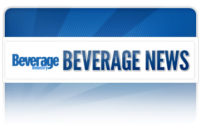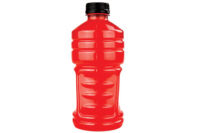Finding the goodness inside of juices

Honest Tea's Honest Kids brand, PepsiCo’s Tropicana brand and Nestlé’s Juicy Juice brand responded to consumer health concerns by releasing new products in 2012 with less or no added sugar.











Although juices have long been a popular start to the day because of their wholesome nutrition, vitamins and more, the category has experienced numerous innovations aligning with consumer trends. As consumers are encouraged by dieticians and nutritionists to reduce sugar consumption, beverage manufacturers also are heeding this call by developing products that fit this bill.
“Parents are concerned about the rising obesity epidemic [and] about their children’s teeth,” explains Agata Kaczanowska, beverage industry analyst at Santa Monica, Calif.-based IBISWorld.
Despite these concerns, the market has remained stable, according to multiple sources. SymphonyIRI Group, Chicago, says that dollar sales for refrigerated fruit juices and juice drinks increased 1.7 percent to more than $6.4 billion in supermarkets, drug stores, mass market retailers, gas stations, convenience stores, military commissaries, and select club and dollar retail chains during the 52 weeks ending Nov. 4, 2012. Similarly, Mintel found that the category experienced a 1 percent increase, without adjusting for inflation (0.6 percent decrease when adjusting for inflation), in 2012, says Food and Beverage Analyst Sarah Day Levesque.
In addition, this general consumer health concern might prove beneficial for the juice market as consumers make the switch from carbonated soft drinks, IBISWorld noted in its September 2012 report, “Juice Production in the U.S.” Consumers still perceive juices and juice drinks as healthy beverage choices and enjoy the convenient, nutritional benefits they provide, it added.
However, Mintel’s Levesque expects sugar content concerns to be a major driver in terms of marketing and innovation for the juice industry in the coming year. “If you have a product that’s 100 percent juice, make sure you market it as all-natural sugar or no added sugar so that consumers are aware of the kind of sugar that they’d be consuming if they consume your products,” she advises. “We’ve also started to see companies come out with lower-calorie or lower-sugar products … and I think we’ll see a lot more of that coming out of other companies finding innovative ways to still sell juice but create a lower-calorie product.”
To do this, beverage-makers are making formulation changes, such as using stevia or cane sugar, IBISWorld’s Kaczanowska says.
Purchase, N.Y.-based PepsiCo’s Tropicana brand added new varieties this year to its Trop50 line of better-for-you, stevia-sweetened juice drinks to entice the health-conscious consumer. Trop50 Red Orange blend of orange juice and red oranges, which was released in May 2012, offers 50 percent less sugar and calories than 100 percent juice blends, the company says. An 8-ounce serving contains 50 calories, supplies a full recommended daily value of vitamin C, is a good source of potassium, and does not contain artificial sweeteners, it adds. The Trop50 line in general has been popular, Mintel’s Levesque notes, and SymphonyIRI lists the product as the No. 3 best-selling refrigerated fruit drink, totaling more than $160 million in dollar sales during the 52 weeks ending Nov. 4 in measured channels.
According to measured consumer insights released by Glendale, Calif.-based Nestlé’s Juicy Juice brand, 58 percent of juice and juice drink consumers dilute beverages at home. Virginia Lee, senior research analyst at Chicago-based Euromonitor International, notes that pediatricians and nutritionists have been advising mothers to do so to reduce their children’s sugar and caloric intake. This year, both Juicy Juice and Bethesda, Md.-based Honest Tea, a subsidiary of The Coca-Cola Co., Atlanta, have offered solutions to this scenario by releasing juice products for kids with less sugar content.
Juicy Juice Fruitifuls all-natural juice drinks offer 35 percent less sugar than its regular juice lines and a full serving of fruit in each single-serve carton, the company says. The new juice products, which were launched last August, are available in Punch Splash, Apple Quench, Berry Cherry Burst and Orange Strawbana Blast varieties.
Similarly, Honest Tea reformulated its Honest Kids juice drinks in 2012 to offer parents a healthier option for their children. Honest Tea removed the organic cane sugar from all five varieties of the juice line and sweetened the beverage with added juice, the company says. The juices now contain 30 to 42 percent juice, an increase of 12 to 26 percentage points, depending on the variety, and 40 calories in each 6.75-ounce pouch, it says.
“Honest Kids has experienced dramatic growth to the point where it is almost a third of our business,” said Co-founder and TeaEO Seth Goldman in a statement. “We are excited we found a way to deliver the same not-too-sweet taste by sweetening the drinks only with fruit juice.”
Honest Kids juice pouches launched nationwide this month in Berry Berry Good Lemonade, Goodness Grapeness, Tropical Tango Punch, Super Fruit Punch and Appley Ever After varieties, with the lemonade, fruit punch and grape varieties also available in multi-serve bottles.
Value and vitamins
Consumers consider more than just the sugar content of the juice products they purchase. When choosing a juice product, it comes down to taste, price and packaging for consumers, Euromonitor’s Lee says. Consumers want a product that tastes good but also offers a good value and jumps out at them on the shelf because of its packaging, she says.
According to research by Rockville, Md.-based Packaged Facts, consumers believe that glass bottles maintain juice quality better than any other packaging type, but they buy juice in plastic bottles or cartons more frequently because of their greater availability. Consumers also enjoy the added benefit of being able to see the juice through plastic and glass bottles to examine the quality of the product and see how much of the product is left during consumption, the company reports.
Some consumers have been increasingly reading the nutrition facts on the package, whether glass, plastic or carton, before purchase as a result of consumer health concern trends, Euromonitor’s Lee and IBISWorld’s Kaczanowska say. However, Mintel’s Levesque notes that this is truer of 100 percent juice buyers, because these buyers are purposely making sure the product they buy contains 100 percent juice in addition to health benefits. Those who buy juice drinks often are more concerned with prices, she says.
Those who do read the nutrition facts will find that juices and juice drinks often offer benefits such as vitamins A, B, C and E, calcium, fiber, antioxidants, minerals, digestive health, energy and immunity. However, the emphases on these claims hit their highs in 2010 and 2011 but have since dropped off, Mintel’s Levesque notes. “Claims for new product launches on fruit juice have kind of dropped off this year … except for the allergen claims,” she says. Although allergen claims are not as common as other types of claims, companies might have chosen to continue to use allergen claims to expand their consumer base without worrying about inadvertently excluding consumers with allergies, she says.
Some brands choose to prominently display their nutritional benefits on the front of the package to really catch the consumer’s eye, Euromonitor’s Lee says. For example, Bolthouse Farms, a subsidiary of Camden, N.J.-based Campbell Soup Co., promotes the 700 percent recommended daily value of vitamin A in each serving and three and three-quarter servings of vegetables in each bottle of its 100% Carrot juice on the front of the label.
With nutritional boosts like these, juices and juice drinks have the advantage of convenience over their fresh fruit competitors, Euromonitor’s Lee says. “I think people who do like to consume juice … in general enjoy the taste of fruit; they do know that fruit has a lot of nutrients [and] vitamins, but it’s maybe too much work to peel an orange at home or at work,” she says. “And the portability, outside of a banana, other fruit is kind of hard to carry around, whereas juice, if you’re in the office, you can just buy it in a drug store in the morning and just put it in your office refrigerator.” Plus, considering that children and teenagers make up the largest demographic of juice consumers, it can be easier to convince them to drink their daily U. S. Department of Agriculture-recommended 1 to 2 cups of fruit and 1 to 3 cups of vegetables, depending on age and gender, than eat them, Mintel’s Levesque says.
Playing favorites
Orange juice remains the No. 1 juice flavor of consumer choice, dominating approximately 49.7 percent of the juice market, IBISWorld’s Kaczanowska says. Apple follows at No. 2, making up 32.9 percent of the market, she adds.
“[Their popularity] is a combination of price point and also the fact that many Americans just drink orange juice in the morning with breakfast and associate apple juice with health benefits for their children,” she says. “It’s just kind of traditional.”
Popularity also is affected by market availability, Mintel's Levesque notes. “It’s kind of a back and forth,” she says. “Orange and apple juices are on the market more because that’s what consumers like, but it’s also what they drink because it’s on the market.”
Following these two flavors are grape at 5.3 percent, cranberry at 3.5 percent, pineapple at 2.8 percent, grapefruit at 2.6 percent and lemon at 2.1 percent, respectively, IBISWorld reports.
Prune juice and lime juice have been the fastest-growing flavors in the last 10 years, IBISWorld’s Kaczanowska adds. The aging baby boomer generation is taking an interest in prune juice for its digestive health benefits, while lime juice also is being enjoyed for its migraine relief and digestive health properties, she says.
Some beverage-makers are starting to use exotic fruit and vegetable flavors either in isolation or in blends, says Natalie Tremellen, market analyst for Innova Market Insights, Duiven, the Netherlands. Lychee, marula, pink guava, rhubarb, mandarin and beetroot along with flower flavors such as hibiscus, orange blossom and rose are growing in popularity because of their flavor and natural health benefits, she says. And although the vegetable juice category tends to stick to mainstream flavors, unusual options like asparagus, cucumber, artichoke, broccoli and kale also are starting to come into play, she says.
Crazy for coconut
The rising star in the fruit juice blends category this year has been coconut water, Mintel’s Levesque says. The beverage grew 164 percent from 2010 to 2011 in food, drug and mass merchandise stores excluding Walmart to $69 million and is expected to boost total juice sales by 8 percent in the near future, according to Mintel’s January 2012 report, “Fruit Juice and Juice Drinks – U.S.”
“They’re riding on this health and wellness trend where they promise this holistic health, and consumers feel good about themselves for consuming it because they feel like they’re getting added benefits from it,” Mintel’s Levesque says.
Health enthusiasts are drawn to coconut water for its low-calorie hydration benefits, Euromonitor’s Lee adds. Major brands including The Coca-Cola Co., PepsiCo and Plano, Texas-based Dr Pepper Snapple Group all have investments in coconut water manufacturers, and the distribution of coconut water has grown exponentially, making it available in supermarkets, supercenters and mass merchandisers, convenience stores and more, according to Euromonitor’s May 2012 report, “Fruit/Vegetable Juice in the U.S.” Mintel’s Levesque expects that coconut water will continue to grow in popularity and be incorporated into more blends to add more innovation to the beverage market. BI
Looking for a reprint of this article?
From high-res PDFs to custom plaques, order your copy today!












